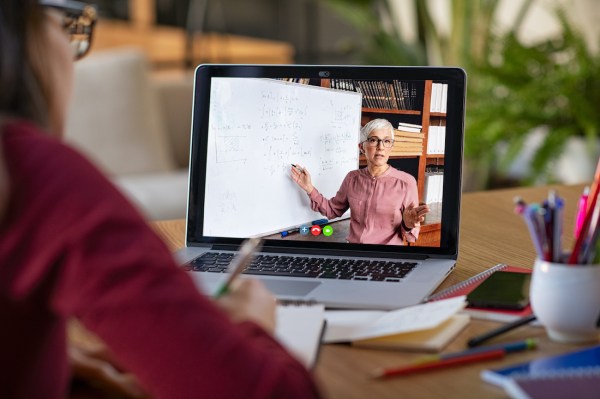Back in January, Georgia Tech professor David Joyner got a cryptic email from a student based in Wuhan, China.
“I’m under quarantine, but my internet access is okay so I have more time to spend on classwork, I wanted to let you know,” the message read. Unsure why Wuhan would be under quarantine, Joyner did a quick Google search and saw the beginnings of the coronavirus pandemic.
“I thought, there’s something going on in Wuhan so maybe we’ll have some students affected by it,” Joyner said. Fast-forward two months and the coronavirus is a household term. All of Joyner’s students, regardless of geography, have been impacted by the pandemic.
It has been a little over a month since colleges and schools across the country started shutting down due to COVID-19. Edtech startups had a surge in usage and a demand for more resources than ever. Now that the adoption scramble has slowed, the same startups are reckoning with unprecedented use cases.
Everyone knows how they’re expected to behave in a physical classroom, but can you stop a student from cheating when taking a test in their bedroom at home? How should teachers offer 1:1 time and take questions during a lesson?
Piazza founder Pooja Sankar says teachers face more open questions: “What does it mean to record myself? What does it mean to have a camera on my face? How do I know I can hold a class with reliable internet connection?”
Piazza is a platform that allows teachers to create forums for their classes where students can post questions and get answers accordingly. After finding an increase in users as a result of COVID-19, the company saw that it might also help teachers track other metrics, like student comprehension and engagement.
Today, the company launched two new features based on requests from teachers using its service: Live Q&A, so students can upvote questions for teachers to answer, and a new method for teachers to download participation data.
“Observant teachers were like, give me a way to understand which students are heavily engaged…reading a lot of posts, even if they’re not posting themselves,” Sankar said. Teachers have told the company that shy students are engaging more in digital settings, because “they don’t worry that the whole class will see them raise their hand,” she added.
Brainly, a homework help platform, is another self-serve startup that focuses on students as end-users. The service has platform activity climbing 200% month over month in some states and has exceeded 200 million users globally since COVID-19 started. The massive demand comes from a simple truth, says to Eric Oldfield: “all work now is homework.”
Oldfield’s kids, he says, have been eased into online learning in the past month. His children haven’t had a full day of classes yet, but instead different subjects on different days. “We’re changing the rhythm of our business from a time of day and day of the week,” he says.
Beyond the K-12 world, colleges are also thinking more critically about long-term needs for students in a remote world, like how to manage a higher education retention rate from afar.
Sister duo Claudia and Carolina Recchi created EdSights as a better way to track high and medium-risk students to help schools reduce their drop-out rates. The company’s two main products are a bot that texts students individually to check in on needs ranging from food safety to mental health and finances; and a dashboard for administrators to see what percentage of their students are struggling with specific issues at the moment.
The notion of sharing personal woes with a college-owned robot may be uncomfortable to some students. But, according to the founders, the pandemic has encouraged them to open up more than ever before.
One student wrote, “I struggle with keeping myself on task and focusing at my home. My home is a crazy place right now. My parents don’t know their business and the bills. I am not good at online classes.” Another shared that times are “just hard because I had two jobs on campus and I now have no income for my credit card bills. It’s also difficult because there used to be the meal plan, but now we are having to buy more groceries.”
While EdSights has released a free version of its technology since COVID-19, the company has landed 30 paying customers and charges colleges $15 to $25 dollars per student. Most customers bring on their entire student body.
“Before this, we did see a lot of universities asking, ‘can I roll this out to freshmen or can I only roll it out to my first-generation students or maybe those that need additional support?’ ” says Carolina Recchi. “Now, colleges are not only asking us to help with all four years, but we’ve had some institutions ask us to roll it out to graduate students, which was new, because we had never done that before.” Other universities have asked EdSights to help students who have been admitted but not yet started.
“Obviously, universities are also spooked that students won’t show up in the fall,” she said. “So they want to make sure that there’s a connectivity and they feel connected to the university, even if they can’t go to campus.”
While these use cases sprout up, remote learning is largely business as usual for Joyner, since he is Georgia Tech’s executive director of online education. He’s always taught digitally and says the biggest struggle he’s seen with students has not been video-conferencing calls and communication, but instead the immense and rapid change in how we live.
“I hope people in the end recognize something like, this was an emergency shift not a deliberate shift,” Joyner said, on how edtech will fare going forward. “You would not judge the results of something overall based on an emergency shift.”

